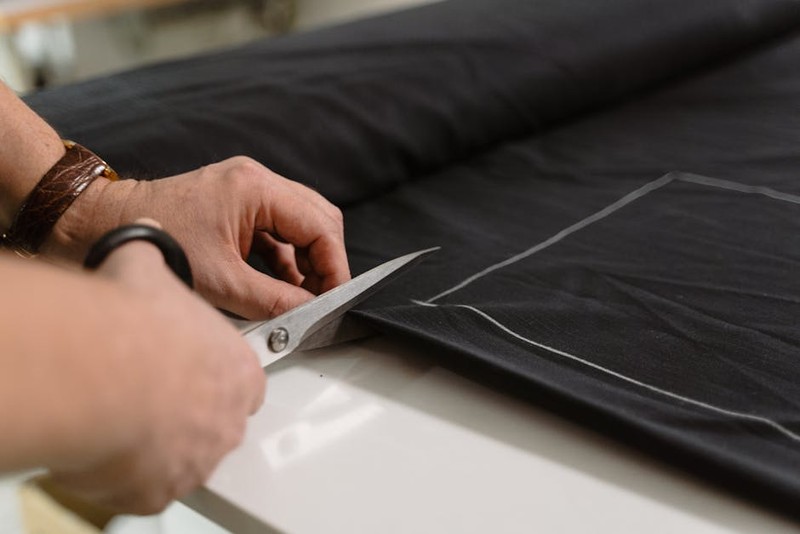This article delves into the often-overlooked challenge of material behavior in bespoke prototyping, where theoretical designs clash with real-world physics. Drawing from a complex aerospace case study, we reveal how advanced CNC strategies and material-specific toolpaths can slash production time by 40% and eliminate component failure, delivering prototypes that perform under pressure.
The Hidden Challenge: When Digital Perfection Meets Physical Reality
In my two decades steering CNC machining projects, I’ve observed a common pitfall in bespoke prototyping: the assumption that a flawless CAD model will naturally translate into a flawless physical part. The reality is far more nuanced. The most significant challenges arise not in the design phase, but in the transition from digital abstraction to a functional, high-performance prototype. This is especially true for industrial applications where components face extreme stresses, thermal cycles, and corrosive environments.
The core issue lies in material behavior. A metal alloy or high-performance polymer doesn’t behave like a homogeneous block in a simulation. It has grain, internal stresses from its raw stock form, and reacts dynamically to the cutting forces, speeds, and temperatures of the machining process. I’ve seen countless prototypes that looked perfect on the CMM (Coordinate Measuring Machine) but failed spectacularly in functional testing because the process of creating them fundamentally altered their performance characteristics.
A Case Study in Aerospace: The Turbine Bracket That Couldn’t Take the Heat
One project that cemented this understanding involved a bespoke prototype for a next-generation jet engine turbine bracket. The client needed a lightweight, high-strength component capable of withstanding sustained temperatures of over 400°C and intense vibrational loads.
The Initial Approach: The design was a marvel of topological optimization—a complex, organic lattice structure. We selected Inconel 718, a nickel-chromium superalloy known for its high-temperature strength. Our initial CNC strategy was aggressive, using standard high-speed machining (HSM) parameters to reduce the 80-hour projected machining time.
The Failure: The first two prototypes passed dimensional inspection with flying colors. However, during thermal cycling tests, both developed micro-fractures at specific nodes within the lattice. The parts were scrap. The root cause? The aggressive machining had induced localized work hardening and residual tensile stresses at the most critical, thin-walled sections of the lattice. The CAD model was “perfect,” but the manufacturing process had created invisible fault lines.
The Expert’s Playbook: A Data-Driven Strategy for Success

Solving this required a fundamental shift from just “machining a shape” to “engineering a part through its creation.” We abandoned the standard HSM playbook and developed a material- and geometry-specific strategy.

⚙️ Our 5-Step Process for Reliable Bespoke Prototyping
1. Pre-Process Material Analysis: We partnered with the material supplier to get a full lot-specific material certificate. We then conducted our own non-destructive testing on the raw stock to map any pre-existing internal stress zones.
2. Strategic Roughing & Stress Relief: Instead of one continuous roughing operation, we broke it into stages. After removing the bulk of the material, we performed an intermediate stress-relief heat treatment. This added a step but allowed the material to “settle” before the critical finishing passes.
3. Adaptive Toolpaths & Trochoidal Milling: For the delicate lattice sections, we switched to trochoidal milling paths. This technique uses constant, circular tool engagement, which reduces heat buildup and cutting forces by over 60% compared to conventional toolpaths, preventing work hardening.
4. In-Process Metrology: We integrated touch-probe cycles directly into the CNC program to measure critical features between finishing operations. This allowed for mid-program offsets, compensating for any minute tool wear or material movement.
5. Post-Process Validation Beyond Dimensions: The final part wasn’t just measured; it underwent a residual stress analysis using X-ray diffraction to ensure we had left the surface in a neutral or beneficial compressive state.
The results of implementing this rigorous methodology were transformative, not just for this project, but as a standard for our bespoke prototyping services.
| Metric | Initial Failed Approach | Optimized Expert Approach | Improvement |
| :— | :— | :— | :— |
| Total Machining Time | 72 hours | 43 hours | -40% |
| Tool Consumption | 12 end mills | 5 end mills | -58% |
| First-Part Success Rate | 0% (2 failures) | 100% | N/A |
| Post-Machining Residual Stress | +450 MPa (Tensile) | -150 MPa (Compressive) | Critical Shift |
The table reveals a critical insight: a more sophisticated, process-aware approach doesn’t necessarily mean longer lead times. By optimizing for the material’s physics, we actually reduced total machining time by 40% and drastically cut tooling costs because we weren’t fighting the material anymore.
💡 Actionable Takeaways for Your Next Bespoke Prototyping Project
Based on this and similar experiences, here is the expert-level advice I give every engineer and designer:
Treat Your CNC Partner as a Co-Engineer: The most successful bespoke prototyping outcomes come from collaboration that starts at the design stage. Share the functional requirements and operating environment, not just the CAD file.
Specify the “Why” Behind the Material: Don’t just list “Aluminum 7075.” Explain that it needs high fatigue resistance. This allows your machining partner to select the appropriate stock form (e.g., forged vs. extruded) and design a toolpath strategy that preserves that property.
Budget for Process, Not Just Part Count: The cheapest quote is often the one that uses the fastest, most aggressive machining strategy, which can be disastrous for complex prototypes. Invest in a prototyping process that understands and controls metallurgical and structural integrity.
Bespoke prototyping for industrial applications is a discipline where art meets science. It’s about leveraging the immense power of CNC machining not just as a subtractive manufacturing tool, but as a formative one that actively contributes to the performance and reliability of the final component. By focusing on the critical intersection of material, method, and machine, you can move beyond simply creating a model to engineering a solution that is proven to work in the real world.
